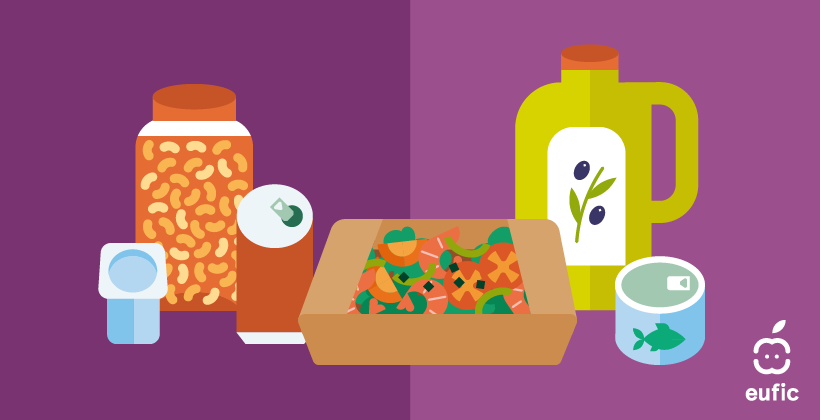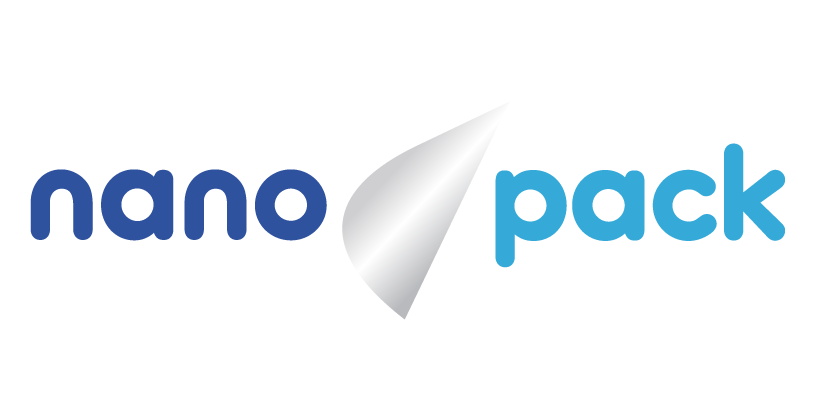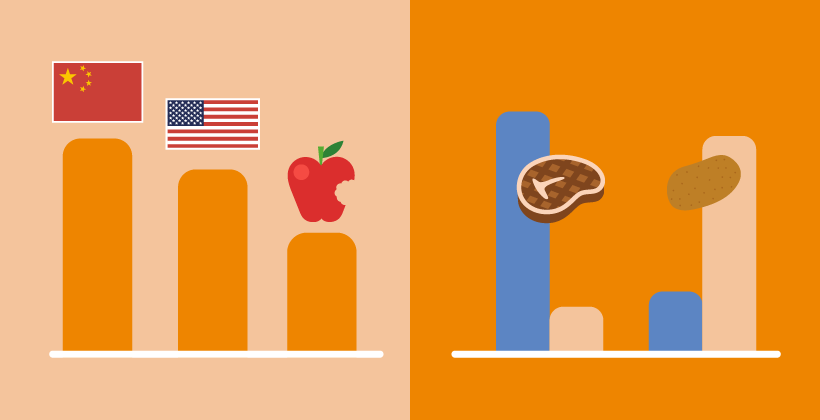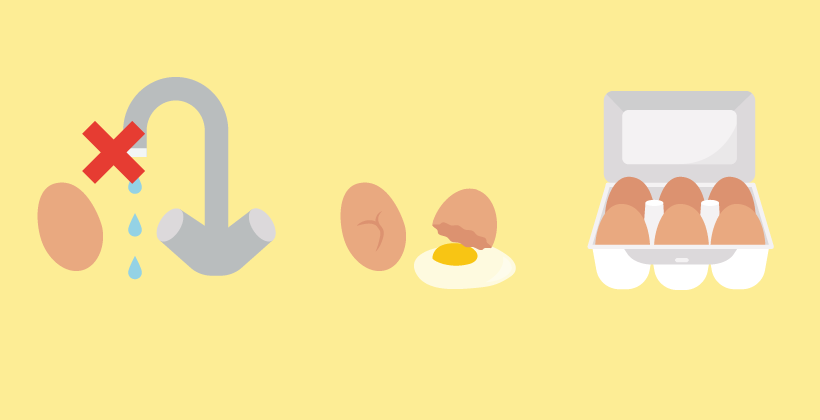Opportunities for nanotechnology in food and feed
Last Updated : 22 February 2017Nanoparticles exist in nature, and humans are exposed to these particles on a daily basis. Today it is possible to deliberately create matter with very small dimensions and nanotechnology can provide ways to modify the composition of food and feed, and packaging materials, at a very small scale. This may allow for the development of new foods and improving food processing and packaging in ways that will benefit consumers.
What is nanotechnology?
Nanotechnology is the intentional control of matter (including food and feed) at very small dimensions ranging from 1 nanometre (nm) to 100 nm, and a nanoparticle is a particle of matter in this size range. The word “nano” refers to a billionth of a metre (10-9m), or a millionth of a millimetre. To put this into context, a human hair is about 80,000 nm wide.1,2 At these very small dimensions, the matter in food can behave in different, and potentially beneficial, ways that can be used by industry to create new or improve existing food and feed, and processing operations.
What are the applications for food and feed? Is nanotechnology new?
Humans are naturally exposed to nanoparticles on a daily basis and always have been. The process of digestion in our guts for example breaks food down into nanoscale particles so we can absorb nutrients from the food we eat. Naturally-occurring nanoparticles, or nanoparticles introduced during traditional food processing (milling, grinding) have been present in foods for many years. For example, some foods have a nanoscale structure that is invisible to the naked eye (e.g. mayonnaise, which is an emulsion of tiny oil and water particles held together without separating).
However, it is the ability to use nanotechnology to deliberately create matter with very small dimensions or specific shapes or compositions that behave in a desirable way which is new. One example is the development of packaging materials with unique physical and chemical properties; in the United States some beer manufacturers are using nanotechnology to incorporate nanoparticles into the packaging materials used for beer bottles in order to prevent gas escaping (to help the beer retain its fizz) and stop air entering (which spoils the beer’s flavour).3-4
Widespread application of nanotechnology in the food and feed industry is still at an early stage, with many applications of nanotechnology being currently under development. One important opportunity may be the use of nanotechnology to improve nutrition: it may be easier for the body to absorb nutrients, vitamins or enzymes contained inside a nanoparticle which could also help mask undesirable flavours.
Research is also looking at how nanotechnology could be used to reduce the use of antibiotics in animals, which could help decrease the development of antibiotic resistance in both animals and humans.5 Other expected benefits from nanotechnology research include better efficacy and delivery of pesticides and biocides, safer animal feed and improvements in the feeding efficiency, nano-barcodes for improved traceability, and reformulation of foods which are lower in fat, salt and sugar while retaining the foods taste and appearance.3-4 Table 1 shows a summary of potential applications of nanotechnology in food and feed.

Figure 1. Some potential areas of application of nanotechnology in food and feed
Is nanotechnology safe?
As with any new technology or product, potential risks include impacts on long-term health and the environment. However, we should remember that just because a material is ‘nano’, it does not mean that it is inherently riskier than other materials or chemicals. Despite the potential benefits that nanotechnology offers, there are gaps in our knowledge about the safety of its application in food production and the incorporation of nanoparticles in food.6 The safety of any potential use of nanotechnology in food would need to be demonstrated and assessed by European regulators before it could be used in the EU. The European Food Safety Authority (EFSA) has issued guidance on the risk assessment of nanotechnology in food and feed.7 Considerable research is underway to assess the safety of nanoparticles at all stages, from manufacture and exposure in the work place, to their eventual fate in the environment.
Is there any regulation regarding its use?
There is no dedicated regulation in Europe on nanotechnology in food and feed, but the current European food and feed legislation does address the aspect of safety associated with nanotechnology. For instance, the General food law in Europe says that only safe food can be placed on the market and since 2014, it has been a legal requirement to label foods that contain nanoparticles to inform consumers of their presence.6,8,9,10
The future of nanotechnology
The future of nanotechnology in the food and feed industries is still uncertain. While there are many perceived and actual benefits from the use of nanotechnology, there is a lack of awareness about the technology amongst European consumers. Although it is difficult to assess how consumers will react to current and future applications of nanotechnology, there is no doubt that consumer acceptance will be critical if it is to be used widely in the future. There is therefore a need for inform consumers of the potential benefits and safety considerations to increase their understanding. This may help to avoid unnecessary alarm stemming from unfamiliarity with the technology.6,7,11
References
- Duncan T (2011). Applications of Nanotechnology in Food Packaging and Food Safety: Barrier Materials, Antimicrobials and Sensors. Journal of Colloid and Interface Science 363(1):1-24.
- EUFIC (2006). A big future for the science of the small. EUFIC Food Today n°12.
- Amentaa V, et al. (2015). Regulatory aspects of nanotechnology in the agri/feed/food sector in EU and non-EU countries. Regulatory Toxicology and Pharmacology 73(1):463-476.
- RIKILT & Joint Research Centre (2014). Inventory of Nanotechnology Applications in the Agricultural, Feed and Food Sector. EFSA Supporting Publication: EN-621, 125pp.
- Huang S, et al. (2015). Nanotechnology in Agriculture, Livestock and Aquaculture in China. A Review. Agronomy for Sustainable Development 35:369–400.
- Food Safety Authority of Ireland (2010). Nanotechnology and Food.
- European Food Safety Authority (EFSA) (2011). Guidance on the risk assessment of the application of nanoscience and nanotechnologies in the food and feed chain. EFSA Journal 9(5):2140.
- Regulation (EC) No 178/2002 of the European Parliament and of the Council of 28 January 2002 laying down the general principles and requirements of food law, establishing the European Food Safety Authority and laying down procedures in matters of food safe
- Gupta N, et al. (2012). Factors influencing societal response of nanotechnology: an expert stakeholder analysis. Journal of Nanoparticle Research 14(5):1-15.
- Handford CE, et al. (2014). Nanotechnology in the agri-food industry on the island of Ireland: applications, opportunities and challenges.
- Zimmer R, Hertel R & Fleur Böl G (2011). BfR delphi study on nanotechnology: expert survey of the use of nanomaterials in food and consumer products. BfR – German Federal Institute for Risk Assessment.







